Change in the Hospitality Industry: New Paradigms, Frames, and Perspectives

By Mike Oshins
Over the past 15-20 years, changes in hotel ownership and management, the growth and development of online reservation systems and the proliferation of lodging alternatives have altered the hospitality landscape, bringing new complexity to the industry. Two decades ago, a Marriott hotel was commonly owned and managed by Marriott; now, many are owned by one company, franchised with the Marriott name, and managed by a third company. While customers used to be able to pick up the phone and call a hotel’s reservations center or use their local travel agency to book a room, today online distribution systems like Expedia, Travelocity, and Kayak are powerful intermediaries that have all but replaced traditional consumer travel agencies. Travelers may choose among many alternatives to hotels for lodging, including AirBnB, HomeAway, Flipkey, and VBRO. Mergers and acquisitions continue to multiply, exemplified most notably by Marriott’s purchase of Starwood to create the world’s largest hotel company with 30 brands. Millennials’ preferences have pushed the development of new brands with new thinking about hotel design, as demonstrated with Hilton’s Tru, Best Western’s Vib and Glo chains, and Intercontinental’s EVEN.
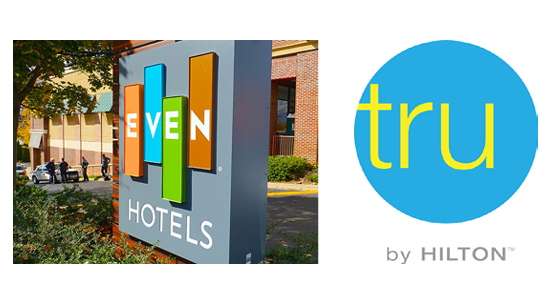
Travel patterns have also changed. China has become the largest exporter of tourists in the world, totaling almost 100 million outbound travelers and representing almost one in ten tourists in the world. Chinese travelers also spent the most money, roughly $250 billion in 2015. For reference, the second highest spenders were Americans at $110 billion. In the U.S., national discussion about travel bans, new barriers to hiring non-domestic seasonal workers (a key element in New England’s summer tourist season), possible elimination of the national Brand USA marketing effort, and tenuous Cuba travel policies are all creating uncertainty in the tourism market. These changes and ambiguities present new challenges, both large and small, for the hospitality industry, requiring those at the forefront of the field to anticipate and respond to the subsequent fallout.
Prolific business author John Kotter states that the main role of leadership is dealing with change. Depending on how it’s viewed, with the appropriate perspective and pliancy, change can present an organization with new opportunities—the possibility of taking advantage of changing demographics, new technologies, or the emergence of new markets. Change can also raise dilemmas, such as the need to address new competitors, contend with a crisis or cope with a lack of available employees. Even before developing and implementing successful change management processes, organizational leaders must have the ability to recognize the opportunities and dilemmas presented by change and know how to think about them. To see the need for change, to identify new realities, either current or future, one must be able to view the big picture and the current climate in new ways. This ability to see the present and near future from a new vantage point is one of the main reasons General Electric (GE) CEO, Jeff Immelt, moved GE world headquarters to Boston’s expanding Seaport District. GE’s new home will “place his leadership team in a vibrant city with a world-renowned innovation scene, instead of in a wooded Connecticut suburb” (Boston Globe), thus giving his senior team a new perspective, and the opportunity to make closer connections with institutions able to stimulate new ideas and create a new pipeline for employees. Other than moving a $240 billion company’s world headquarters—something that’s not always feasible to achieve—how else can one enhance a leadership kit with tools for responding effectively to change? The ability to think more creatively, form new habits, change paradigms, reframe one’s perspective, and think differently by learning new ideas are all tools that can aid in addressing the first element of leading change, that is identifying that change is needed. The following examples highlight some of the ways one can learn to be more successful in thinking about and capitalizing on the opportunities presented by change.
Creative Thinking
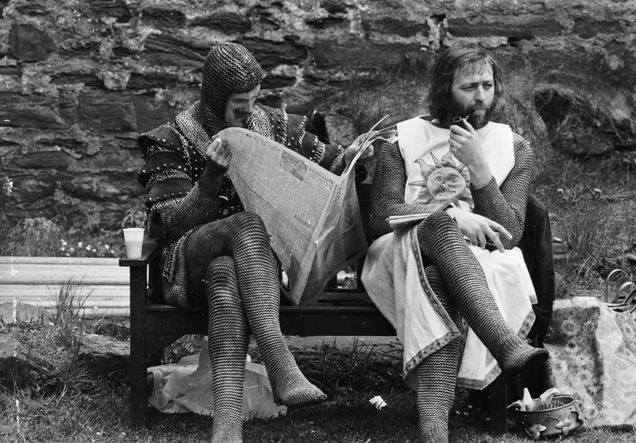
IBM interviewed 1500 CEOs around the world in 2010 and found Creativity is now the single most important leadership competency and is needed in all aspects of leadership. If one thinks in the same way as everyone else, the opportunity for new ideas (and new solutions) is limited. The irreverent and offbeat humor of Monty Python is captured in their tagline, “And now for something completely different!” Think Different! is the mantra for Steve Jobs and Apple, as eloquently explained in Simon Sinek’s Start with Why. Sir Ken Robinson, author and the holder of the top TED Talk Do Schools Kill Creativity, defines creativity as, “the process of having original ideas that have value.” There are many ways to increase creativity, including:
- Establishing a culture in which failure is a part of learning. “A growing number companies are explicitly rewarding failure – giving cash prizes or trophies to people who foul up (WSJ). Earlier in his career, Johnson & Johnson CEO James Burke once went to see Mr. Johnson after his product launch failed miserably. Instead of being fired as expected, Mr. Burke found instead that Mr. Johnson shook his hand and congratulated Burke on the failure. Along with the handshake, Burke was given the following advice that became his philosophy: “Business is about making decisions. You can’t make decisions without failures. Don’t ever make that same mistake again, but please, keep making new mistakes!” Burke made this philosophy “always making new mistakes” an important value within his leadership vision. Similarly, Michael Jordan credits his success with ability to overcome the fear of failure: “I’ve missed more than 9000 shots in my career. I’ve also lost more than 300 games. 26 times I’ve been trusted to take the game winning shot and missed. I’ve failed over and over and over again in my life. And that is why I succeed.”
- Collaboration. Ken Robinson touts that creativity loves collaboration as even individual creativity is almost always stimulated by the work, ideas and achievements of other people. Author Daniel Goleman agrees: “A close-knit team, drawing on the particular strengths and skills of each member of the group, may be smarter and more effective than any individual member of that group. Yale psychologist Robert Sternberg calls it “group IQ”—the sum total of all the talents of each person in the group. When a team is harmonious, the group IQ is highest…The value of collaboration is a hard lesson to learn in [some] cultures, where the trailblazing lone hero has long been idolized, and where the role of the individual are so often placed over those of the group. But even those working alone can learn the advantages of teamwork.”
- Positive thinking. It has been proven that merely thinking you are more creative increases creativity. Change your attitude with the mantra: I am creative. IDEO founder David Kelley found positive reinforcement increased creativity for employees and helped discover new solutions to design challenges. As people become more comfortable with the realization that they can be more creative, the upward spiral of success is reinforced. Goleman concurs: “The more you can experience your own originality, the more confidence you get, the greater the probability that you’ll be creative in the future.”
- Challenge the Rules. Pablo Picasso believed in challenging tradition, “Every act of creation is first of all an act of destruction.” A questioning attitude of asking “why” multiple times for the same question (e.g. why do we use time clocks for front line employees?) may result in discovering established rules may be hurting more than helping and organization. For example, typewriters were designed with QWERTY keyboards to avoid keys from sticking together if the operator went too fast (i.e. slowed down how fast one could type). Why do computer keyboards still use this configuration as a default? World War II American five-star General Douglas MacArthur believed “you are remembered by the rules you break.”
- Humor. “More than four decades of study by various researchers confirms some common-sense wisdom: Humor, used skillfully, greases the management wheels” (Sala). When people are working together on a problem, those groups that laugh most readily and most often are more creative and productive than their serious counterparts. Joking around makes good sense because playfulness is itself a creative state (Goleman). The use of humor or “being silly” can reduce stress and create a learning environment conducive to new ideas. Author Jonah Lehrer agrees: “When people are exposed to a short video of stand-up comedy, they solve about 20% more insight puzzles.”
- Brainstorming. Building upon the traditional brainstorming technique where ideas are developed in an atmosphere of non-judgmental environment, additional creative methods have emerged, including Edward Debono’s Six Thinking Hats, where “wearing” different colored hats requires addressing the situation with a special focus, Synectics’ inclusion of springboard and excursion techniques to expand idea generation and mind mapping to visually develop ideas. At IDEO, brainstorming sessions include the “odd person in” technique, involving people from very different backgrounds that can spark new ideas.
New Habits
Creating a new habit or set of habits is another way to change how we see things. In his iconic 1989 book, The 7 Habits of Highly Effective People, Stephen Covey illustrates how powerful an influence habits can be in our lives. Covey describes a habit as the intersection of knowledge, skill, and desire: “Knowledge is the what we do and why we do it [principles], desire is the motivation, the want to do, and skill is the how to do.” His seven habits—Be Proactive, Begin with the end in mind, Put first things first, Think win/win, Seek first to understand…then be understood, Synergize, and Sharpen the saw—provide a way of thinking and acting in business and life. By embracing these habits, one can maintain a better balance and create the opportunity to find new ways of looking at situations.

Charles Duhigg’s more recent bestseller, The Power of Habit, addresses the idea of habits as “why we do what we do in business and life.” Taking a psychological approach, Duhigg explores the theory of cues (something that triggers a habit), routines (actions taken in response to cues), and rewards (the positive experiences resulting from routines), which together comprise the habit loop. For example, Starbucks develops habits of willpower to help their staff deal with stressful times. Through role-playing, discussion, and feedback, they train employees how to react to a cue (e.g., an angry customer or a busy period) by choosing a certain routine ahead of time (e.g., remaining calm, looking for solutions, etc.). When an inflection point arrives (cue), employees are able to handle the situation smoothly, resulting in the reward of a satisfied customer and successful chaos management. In this scenario, Starbucks helps their staff create habits by helping them change how they approach and address dilemmas. One employee now thinks of his green Starbucks apron as a shield – when he puts it on, angry customers can no longer affect him!
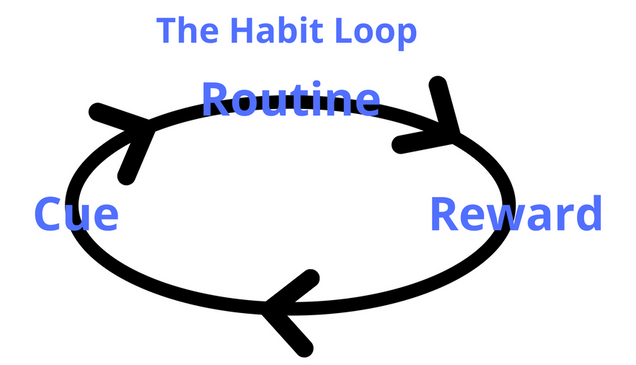
Reframing
“The power of reframing things can unlock a vast array of solutions to problems big and small,” states author Tina Seelig. She illustrates reframing using a classic scene from the Pink Panther movie (a hospitality example, no less).
Inspector Clouseau: Does your dog bite?
Hotel Clerk: No.
Clouseau [bowing down to pet the dog] Nice doggie.
[The dog bites Clouseau’s hand.]
Clouseau: I thought you said your dog did not bite!
Hotel clerk: That is not my dog.
We might be tempted to blame the clerk when the dog bites Clouseau, but the clerk’s final statement surprises us and causes us to consider the situation differently.
One of the key elements of reframing is to view a circumstance with a fresh perspective. In Tom Stoppard’s play, Rosencrantz and Guildenstern are Dead, we see Shakespeare’s classic story of Hamlet through the lens of two minor characters, and in the Broadway hit Wicked, the Wizard of Oz story is interpreted from the witches’ perspectives, revealing a more complex and altered understanding of the Wicked Witch of the West and Glinda, the Good Witch. Reframing a situation allows the possibility of new lessons and solutions which otherwise may go unnoticed.

In their approach to reframing, authors Bolman and Deal use frames as a useful tool to make sense of organizations. The four frames, structural (emphasizing roles & policies), human resource (highlighting human needs, skills and relationships), political (focuses on power, conflict and competition) and symbolic (emphasizing culture, meaning, ceremonies and stories) offer different perspective on how to think about organizations. Each frame provides a different language and model in managing, evaluating, diagnosing and understanding and leading an organization. Altering the way in which we typically frame an organization can help us better communicate with those who interpret the organization differently. Viewing an organization from different frames may also unleash a variety of new ideas to address current or emerging dilemmas or raise up new opportunities to respond to change in our world.
Another example of reframing is illustrated, quite literally, in how we view the world. This spring, 600 classrooms in the Boston Public School system switched from teaching the traditional European-centric Mercator map, developed in the 1500s, to the Peters Projection map (1974), in which land masses are more accurately represented in relation (size and proximity) to one another. For example, using the Mercator map, Greenland and Africa appear the same size; in the Peters map, however, Africa, which is 14 times larger than Greenland, is more proportionally displayed. This idea was brought to mainstream US in a 2001 West Wing clip by the ‘cartographers for social equality’. At one point, when confronted with these new perspectives, a West wing official asked, “You mean Germany is not where we think it is?”— to which a cartographer responded, “Nothing is where you think it is.” The issue of perspective and change about our world, met with incredulity in a fictional drama, became reality this spring in Boston Public Schools.

Paradigms Shifts
The Oxford Dictionary defines a paradigm as “a typical example or pattern of something; a pattern or model.” Scientist Thomas Kuhn introduced the concept of the paradigm shift in his influential 1962 book, The Structure of Scientific Revolutions. Groundbreaking paradigm shifts include examples in areas as diverse as physics, health, and astronomy—think of what Galileo had to go though to convince royalty that the earth rotated around the sun (Copernicus theory) when most astronomers believed the reverse to be true. A paradigm shift changes how we look at things. Malcolm Gladwell’s best-selling books focus on rethinking preconceived ideas, starting with his breakthrough 2006 book The Tipping Point and continuing with his more recent book David and Goliath, which offers several real life examples of when a perceived strength can be a weakness and a weakness… a strength. For example, an extraordinary high number of successful entrepreneurs are dyslexic, including Jet Blue founder David Neeleman. The challenge of dyslexia as a child may provide coping skills later in life – billionaire Sir Richard Branson of Virgin Air considers his dyslexia his greatest business advantage.
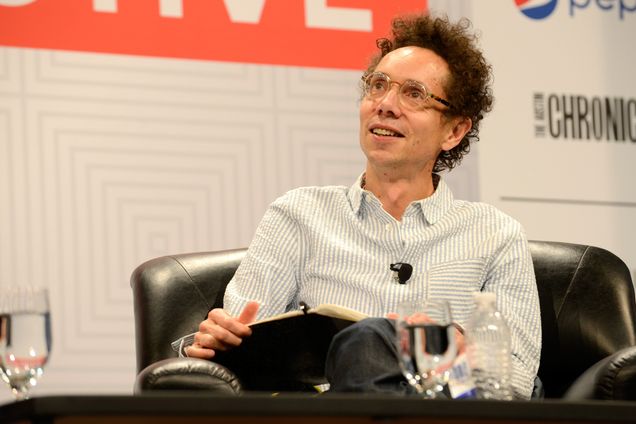
In business, paradigm shift examples include disruptive innovations (e.g., the Internet, mobile technology, and big data analytics), shifting global economies, climate change, employee and societal demands, and changing consumer preferences. Futurist Joel Barker explains that when a paradigm shift occurs, everything resets to zero, past successes guarantee nothing, and shifting business models shift to create new realities. For example, once-successful big box stores and corporations that could not adapt to the digital age, such as Borders Books, Blockbuster, and Kodak, went bankrupt. Compare these examples to Netflix, which was able to successfully navigate from their business model of renting DVDs through the mail to streaming movies and television shows over the internet to increase their market share. Flexibility to adapt to paradigm shifts is a powerful tool. As Charles Darwin explains in describing his iconic research: “It is not the strongest of the species that survives, nor the most intelligent, but the one most responsive to change.”
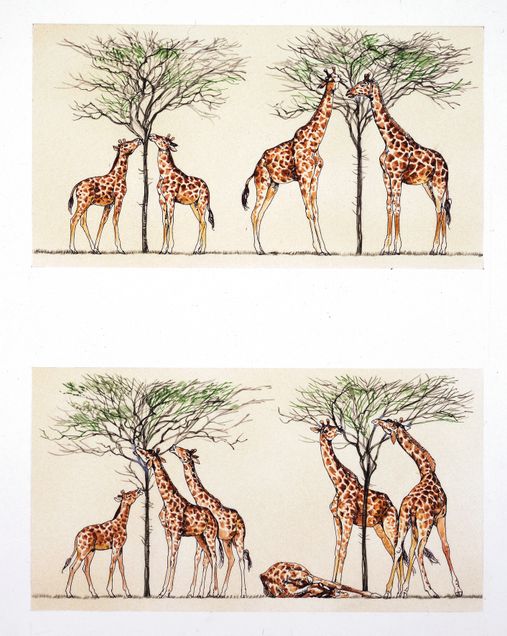
Self-Reflection and Understanding
Shifting paradigms and changing one’s perspective starts with self-reflection: the better we understand ourselves, the better we can approach change. Daniel Goleman provides the multi-faceted framework of emotional intelligence, including two personal competencies (self awareness and self management) and two social competencies (relationship management and social awareness) that should be examined to help better understand moods and how they affect those around them. Peter Drucker asserts in order to be productive over a 50-year work-life it is important to cultivate a deep understanding of one’s self. He offers several penetrating questions in his Harvard Business Review article Managing Oneself, including “How do I work?” “Where do I belong?” and “What can I contribute?”
There are also many tools available to help provide insight into the ways in which we each view and navigate the world around us. With over two million Myers Briggs Type Indicator (MBTI) assessments being administered every year in more than 70 countries, this personality profile tool, based on the work of noted psychologist Carl Jung, continues to be wildly popular in helping people better understand themselves. Key MBTI elements include how we focus our energy (introversion vs. extroversion), the way we take in information (sensing vs. intuitive), make decisions (thinking vs. feeling) and our attitudes toward the external world and how we orient ourselves to it (view the world to be organized and orderly vs. flexible and be experienced). The Big Five personality traits, Fundamental Interpersonal Relations Orientation (FIRO), Thomas-Kilmann conflict mode instrument (TKI), and the Strong Interest inventory are all additional tools that can help analyze one’s preferences.
Identifying one’s personal values is also a strong trend in business today, with a plethora of instruments available for self-discovery. For example, after a two-day, internal values-clarification exercise, each member of the senior leadership team of the Vail Centre posts his/her top five values on the company’s website for everyone to see. Determining and focusing on one’s strengths rather than one’s weaknesses is the cornerstone approach to Gallop Poll and Don Clifton’s Strengthfinder 2.0. This self-assessment tool enables one to identify their top 5 of 34 different talent themes, from Achiever to WOO (winning others over). By better understanding one’s natural instincts, strengths, weaknesses and personal preferences, one can increase the likelihood to learn how other colleagues or customers from different backgrounds, cultures, generations or perspectives see things differently, enabling new approaches or frames to address change.
In his book, The Spirit to Serve, Marriott International founder J.W. Marriott, Jr. adopted 19th century philosophy Alfred North Whitehead’s perspective when developing the Marriott Way, “The art of progress is to preserve order amid change and to preserve change amid order.” The ability to think differently as the hospitality industry moves into uncharted territories—both nationally and internationally, within organizations and in local markets, online and in person—is becoming more important as change continues to evolve at a faster pace than ever before. Being nimble and open-minded enough to adapt, addressing challenges and/or seizing opportunities, will determine which companies wither away and which ones thrive. At the heart of these circumstances is the ability to recognize trends, realize the need for change and act on these situations in ways that navigate the needs of an organization, and its staff and customers. Mental flexibility, adaptability, creativity and personal awareness are key tools in this process that can help hospitality leaders see things from different perspectives, gain new insights, develop and pilot new ideas and better respond to an ever-changing world.
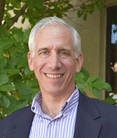
Michael Oshins is Associate Professor of the Practice of Leadership in the School of Hospitality Administration at Boston University. He is former Vice President of Integer Dynamics, a hospitality consulting firm focused on operational productivity and technology. He holds a doctorate in human resource education from Boston University and a master’s degree in hotel administration from Cornell University. Email: moshins@bu.edu
References
-
Arielly, Dan (2008). Predictably Irrational. HarperCollins. New York.
-
Barker, Joel. (1985). Discovering the Future: The Business of Paradigms. HarperCollins.
-
Boitnott, John. (2014, September 24) .J. 10 longtime brainstorming techniques that still work. Inc.
-
Bolman, Lee G. and Terrence E. Deal (2013). Reframing Organizations. Jossey Bass. San Francisco.
-
Buckingham, Marcus (2005). The One Thing You Need to Know. Simon and Shuster. New York.
-
Chesto, Jon. (2016, March 24). GE CEO explains why he’s moving headquarters to Boston. Boston Globe Retrieved from: https://www.bostonglobe.com/business /2016/03/24/ceo-tells-boston-business-leaders-why-moving-boston/1j6TiNUnzrnb3QWkEa5ZuM/story.html
-
Covey, Stephen (1989). The 7 Habits of Highly Effective People.
-
Cpp The Myers Briggs Company. MBTI, FIRO, TKI, Strong instruments (2017). Retrieved from https://www.cpp.com/en/index.aspx
-
De Bono, Edward (1970). Lateral Thinking. Harper & Row. New York.
-
Duhigg, Charles (2014). The Power of Habit. Random House. New York.
-
Drucker, Peter (2005). Managing Oneself. (Best of HBR 1999 reprint) Harvard Business Review
-
Dyer, Wayne. Retrieved from https://www.brainyquote.com/quotes/quotes /w/waynedyer384143.html
-
Felino, Richard. (2015, April 9). Retrieved from http://www.businessinsider.com/richard-branson-dyslexia-as-advantage-2015-4
-
Gladwell, Malcolm (2000). The Tipping Point. Little, Brown and company. New York.
-
Gladwell, Malcolm (2013). David and Goliath. Little, Brown and company. New York.
-
Goleman, D. (1998). What makes a leader? Harvard Business Review (Best of HBR, 2004 reprint). R0401H
-
Goleman, D. and Kaufman, D.(1992, March 1). The Art of Creativity. Psychology Toda. Retrieved from https://www.psychologytoday.com/articles/199203/the-art-creativity
-
Frederick Herzberg (2003, Jan 1). One More time: How do you motivate employees? (HBR Bestseller, 1968 reprint). Harvard Business Review.
-
Kotter, John. (2001, December 1). What leaders really do. Harvard Business Review R0111F-PDF-ENG
-
Lehrer, Jonah (2012, March 10). How to be creative. Wall Street Journal. (p. C1).
-
Levitt, Steven and Dubner Stephen (2005). Freakonomics. HarperCollins. New York.
-
Marriott, J.W. Jr, and Brown, Kathi Ann (1997). The Spirit to Serve. Harper Collins, New York.
-
Pink, Daniel. (2005). A Whole New Mind. Penguin Group. New York.
-
Rath, Tom (2007). StrengthsFinder 2.0. Gallop Press. New York.
-
Robinson, Ken (2011). Out of Our Minds. Capstone Publishing, Chichester, United Kingdom
-
Seelig, Tina. (2013, Jan 1). Shift your Lens: The Power of Reframing Problems. Rotman Management Magazine. Source: Harvard Business Publishing ROT190-PDF-ENG
-
Shellenbarger, Sue. (2011, September 27). Better ideas through failure. Wall Street Journal
-
Vail Centre (2017). Retrieved from: https://vailcentre.org/the-team/
-
Tedlow, R. and Smith, W. (2005, October 20). James Burke: A career in American business. (A). Harvard Business School Publishing (case study) 9-389-177.
-
Von Oech, Roger. (1983). A Whack on the Side of the Head. Warner Books. New York.
-
Whip, Douglas (2014). People: Teaching Willpower Spurs Starbucks’ Business Growth. Retrieved from http://strategicdiscipline.positioningsystems.com/bid/105067/People-Teaching-Willpower-Spurs-Starbucks-Business-Growth
9 comments
There was a gross change in hospitality and transportation after 1989 with a change in Premier of China for Hospitality and Transportation and the southeastern U.S.A. whose major economic industry was hospitality with regional sales and some finance and real estate.
this post is very helpful for us. Paragon provides Hospitality, Event Management & Talent Management. We are
your ONE LIVE PARTNER for brands in
the UK & overseas
Thanks for the informative post.
Wow! Really very nice article. I must say you have given your hard work a form of articles which will help many companies.
Look forward to such great and helpful articles which make our work simpler yet effective. Thanks
https://uihm.org/
People Portal Sobeys ❤️ Sobeys Pay Stub Login
Get the Best Marketing Management Help from Expert writers at the lowest price and guaranteed one-time delivery from Write My Assignment. Our Ph.D. writers have over 25+ Years of experience and can provide you with the best and most genuine work at the lowest price.
For more Information Visit: https://www.totalassignment.com/write-my-assignment
Excellent article. Thanks for sharing.
Website Designing Company In Delhi